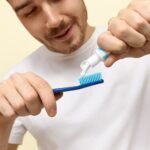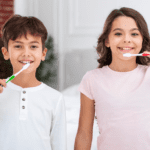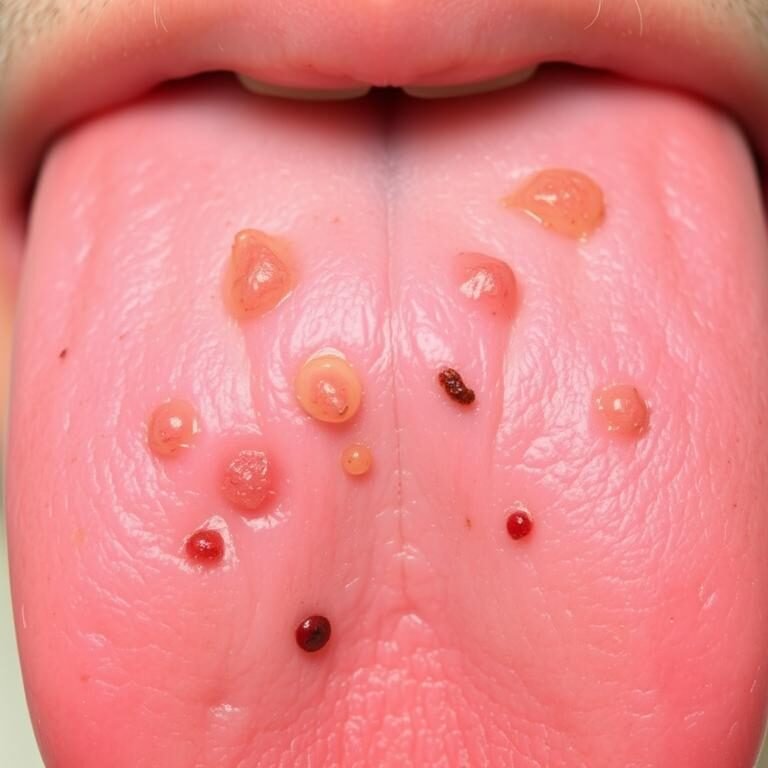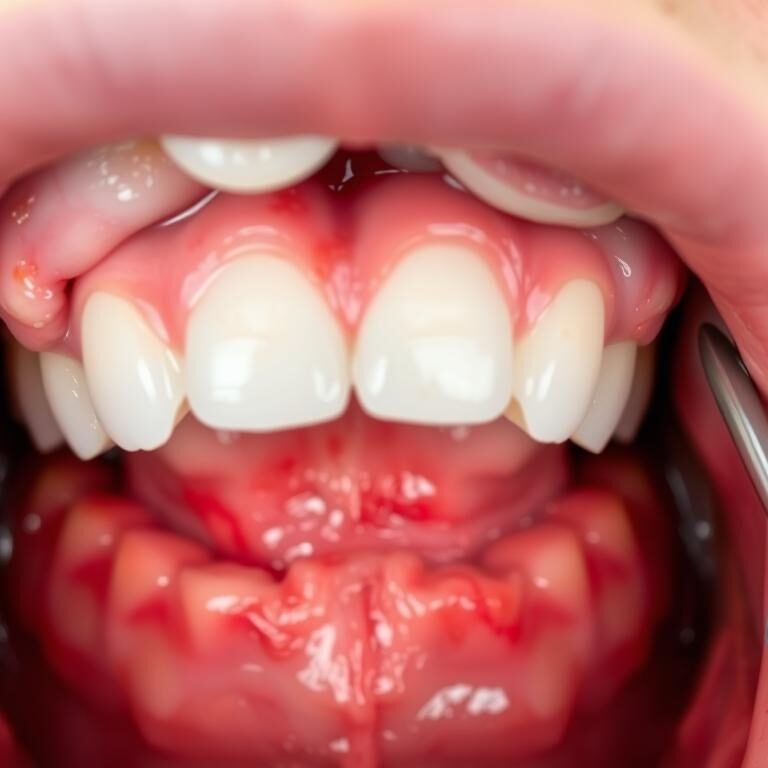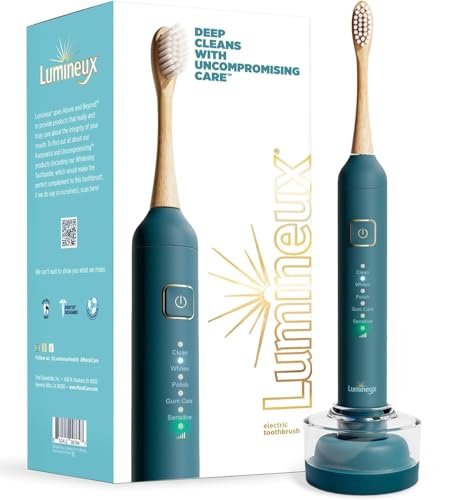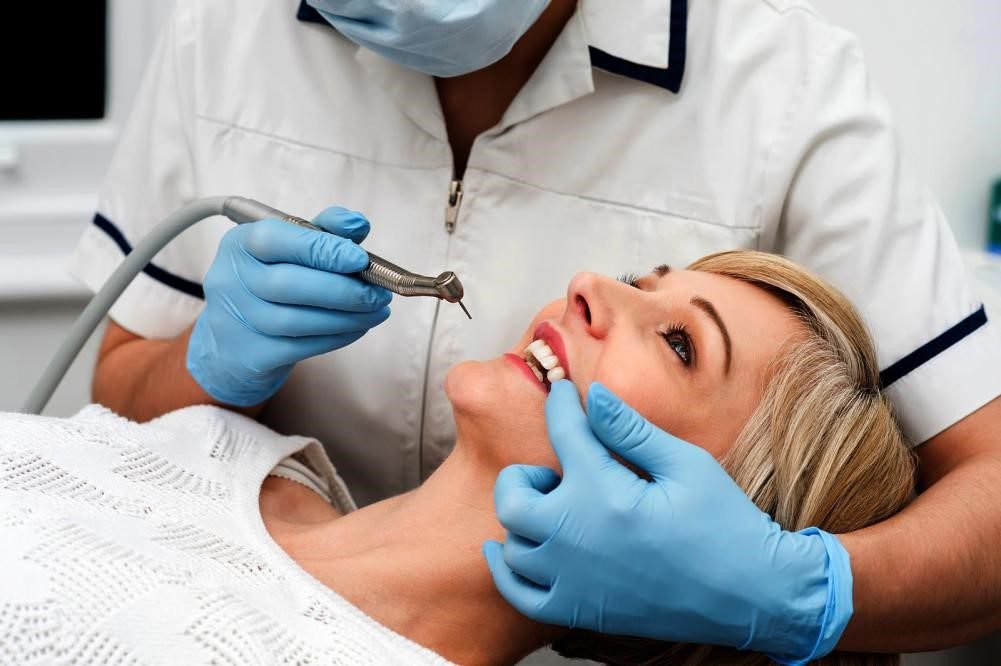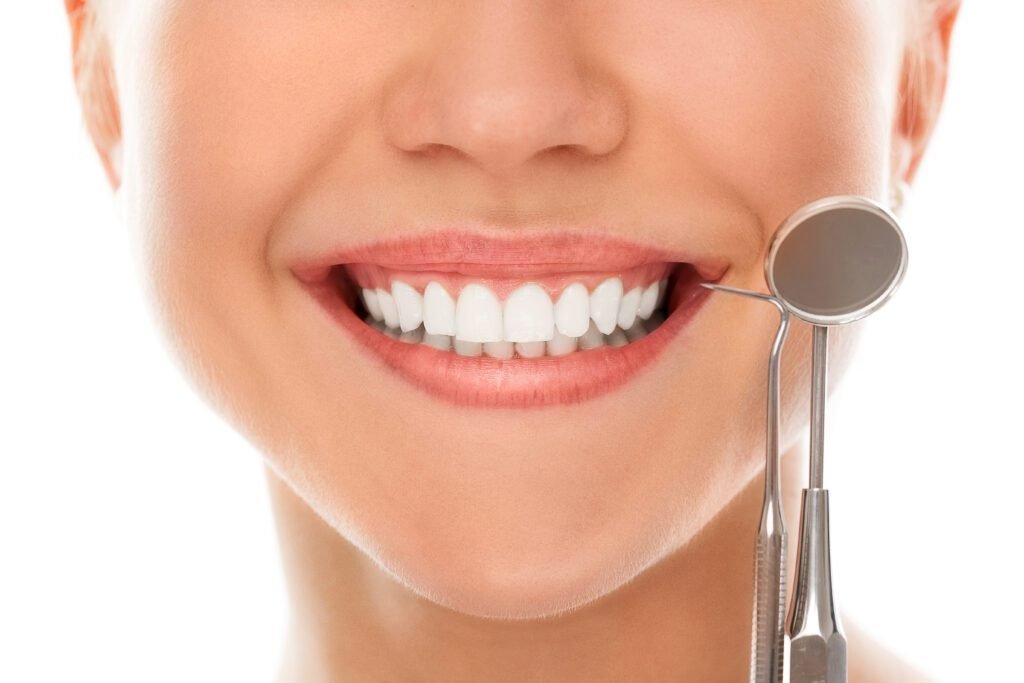Table of Contents
Common Mistake #1: Not Brushing for Long Enough
One of the most common mistakes people make when it comes to oral hygiene is not brushing for long enough. Many individuals simply rush through their brushing routine, spending only a few seconds on this crucial task. However, the American Dental Association (ADA) recommends brushing for a full two minutes, twice a day. This may seem like a long time, but it is essential for maintaining optimal oral health.

Brushing for the recommended two minutes allows enough time for the bristles of the toothbrush to effectively remove plaque and bacteria from all surfaces of the teeth. It also ensures that the fluoride in toothpaste has enough contact time with the teeth to provide maximum protection against tooth decay. When we rush through our brushing, we leave behind harmful bacteria that can lead to cavities, gum disease, and other oral health problems. So, take the time to brush properly and give your teeth the attention they deserve. Your smile will thank you!
Common Mistake #2: Using the Wrong Toothbrush
Using the wrong toothbrush is a common mistake that many people make when it comes to their oral hygiene routine. While it may seem like a small detail, using the wrong toothbrush can actually have a significant impact on the health of your teeth and gums.
One of the main issues with using the wrong toothbrush is that it may not effectively remove plaque and debris from your teeth. A toothbrush with bristles that are too soft may not be able to effectively clean your teeth, while a toothbrush with bristles that are too hard can actually damage your enamel and lead to tooth sensitivity. It’s important to find a toothbrush with bristles that are the right balance of firmness and flexibility in order to effectively clean your teeth without causing any harm.

Another issue that can arise from using the wrong toothbrush is that it may not be able to reach all of the surfaces of your teeth. Some toothbrushes have large heads or bristles that are too short, which can make it difficult to reach the back or sides of your teeth. This can leave plaque and bacteria behind, increasing your risk of developing cavities or gum disease. It’s important to choose a toothbrush with a compact head and bristles that are long enough to reach all areas of your mouth for thorough cleaning.
Common Mistake #3: Brushing Too Hard
Brushing your teeth is an essential part of maintaining good oral hygiene. However, one common mistake that many people make is brushing too hard. It may seem counterintuitive, but applying excessive force while brushing can actually harm your teeth and gums.
When you brush too hard, you risk wearing down the enamel on your teeth, which serves as a protective layer. This can lead to tooth sensitivity and increase the likelihood of cavities. Additionally, brushing too hard can irritate your gums and cause them to recede. Receding gums expose the sensitive roots of your teeth, making them more prone to decay and discomfort.
It is important to remember that brushing your teeth should be a gentle and thorough process, rather than a vigorous scrubbing. To avoid brushing too hard, use a soft-bristled toothbrush and apply light pressure. Let the bristles do the work, and focus on using a circular or back-and-forth motion to effectively clean all surfaces of your teeth. Remember, it’s not about how hard you brush, but how well you clean.
Common Mistake #4: Neglecting to Brush All Surfaces
Brushing your teeth is an essential part of maintaining good oral hygiene. However, one common mistake that many people make is neglecting to brush all surfaces of their teeth. It’s not enough to simply brush the front of your teeth and call it a day. Proper brushing technique involves targeting all areas, including the back, sides, and chewing surfaces of each tooth.
When you only focus on brushing the visible surfaces of your teeth, you leave behind harmful plaque and bacteria that can lead to tooth decay and gum disease. The back teeth, in particular, are notorious for collecting food particles and plaque buildup due to their location and shape. Neglecting these areas can result in cavities and other oral health issues over time.
To ensure that you are brushing all surfaces effectively, it’s important to use the right technique. Start by holding your toothbrush at a 45-degree angle and gently brush in small circular motions. Pay attention to every tooth, both front and back, and spend an equal amount of time on each area. This technique helps to dislodge plaque and food particles from hard-to-reach areas, leaving your teeth clean and your mouth healthy.
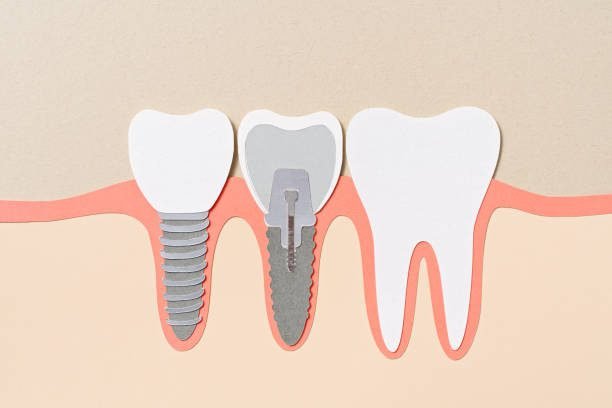
It’s worth noting that neglecting to brush all surfaces of your teeth can also affect the appearance of your smile. Plaque buildup can lead to tooth discoloration and bad breath, which can greatly impact your self-confidence. By taking the time to thoroughly brush all surfaces of your teeth, you can maintain a healthy and attractive smile that you can proudly show off.
In conclusion, neglecting to brush all surfaces of your teeth is a common mistake that can have serious consequences for your oral health. Remember to brush each tooth thoroughly, targeting the front, back, and chewing surfaces. By practicing proper brushing technique and dedicating enough time to each brushing session, you can prevent tooth decay, gum disease, and other oral health issues, ensuring a healthy and beautiful smile for years to come.
Common Mistake #5: Not Replacing Your Toothbrush Regularly
Replacing your toothbrush regularly is a crucial aspect of maintaining good oral hygiene. Your toothbrush may appear perfectly fine, but over time, its bristles can become worn out and frayed, rendering it less effective at removing plaque and bacteria from your teeth and gums. According to dental experts, it is recommended to replace your toothbrush every three to four months, or sooner if the bristles become frayed.
| Aspect | Explanation | Risk/Consequence | Recommendation |
|---|---|---|---|
| Hygiene | Over time, toothbrushes accumulate bacteria and other microorganisms, even with proper cleaning. | Increased risk of transferring harmful bacteria back into your mouth, potentially leading to gum infections or other oral health problems. | Replace your toothbrush every 3 months, or sooner if the bristles are frayed or damaged. |
| Effectiveness | Worn-out bristles lose their cleaning ability and become less effective at removing plaque and bacteria from teeth. | Ineffective brushing can lead to plaque buildup, tartar formation, and increased risk of cavities and gum disease. | Choose a toothbrush with soft, medium-soft, or soft-bristles depending on your dentist’s recommendation. |
| Illness | After recovering from an illness like a cold or strep throat, your old toothbrush might harbor lingering bacteria. | Reinfection with the same illness or spread of bacteria to others sharing the same bathroom. | Replace your toothbrush after any illness, especially if it’s stored close to others’. |
| Aesthetics | Frayed and discolored bristles are an unpleasant sight and may discourage thorough brushing. | Reduced motivation to brush properly, potentially impacting oral health. | Choose a toothbrush with a fun design or color to encourage regular use and replacement. |
| Cost | Replacing your toothbrush regularly might seem like an additional expense. | Poor oral health due to ineffective brushing can lead to expensive dental treatments in the long run. | Consider investing in a high-quality toothbrush that lasts longer and requires less frequent replacement. |
When you continue using a worn-out toothbrush, you may not achieve optimal cleaning results. The bristles lose their ability to effectively reach and clean the surfaces of your teeth and gums, potentially allowing plaque and bacteria to accumulate. This can lead to dental issues such as cavities, gum disease, and bad breath. Remember, a toothbrush with worn-out bristles will not provide the same thorough cleaning as a new, properly functioning toothbrush. So, make it a habit to replace your toothbrush regularly for a healthier smile.
Common Mistake #6: Neglecting to Floss
Flossing is an essential part of maintaining good oral health, yet many people neglect this important practice. When you brush your teeth, you may think that you have effectively removed all food particles and plaque, but the truth is that toothbrush bristles cannot reach the tight spaces between your teeth. This is where flossing comes in, allowing you to clean those hard-to-reach areas and prevent the buildup of plaque and tartar.
Studies have shown that neglecting to floss can have serious consequences for your dental health. In fact, the American Dental Association reports that flossing can reduce the risk of gum disease by removing plaque from the areas where your toothbrush cannot reach. Gum disease, if left untreated, can lead to tooth loss and even contribute to other health issues such as heart disease. Therefore, it is crucial to make flossing a part of your daily oral hygiene routine to maintain healthy teeth and gums.
Common Mistake #7: Brushing Immediately After Consuming Acidic Foods or Drinks
When it comes to maintaining good oral hygiene, most people know that brushing is a crucial part of the routine. However, one common mistake that many individuals make is brushing their teeth immediately after consuming acidic foods or drinks. This can actually do more harm than good to your teeth.
Acidic foods and beverages, such as citrus fruits, soda, and certain types of vinegar, can weaken the enamel on your teeth. Enamel is the protective outer layer of the teeth, and when it becomes weakened, it is more susceptible to damage. Brushing your teeth immediately after consuming acidic substances can further erode the enamel and lead to tooth sensitivity, enamel erosion, and even tooth decay over time.
So, what should you do if you’ve had something acidic? It’s important to wait at least 30 minutes after consuming acidic foods or drinks before brushing your teeth. This allows your saliva to naturally neutralize the acid and for the enamel to remineralize. In the meantime, you can rinse your mouth with plain water to help wash away any remaining acid.
Remember, brushing your teeth is an essential part of maintaining good oral health, but the timing is crucial. By avoiding the common mistake of brushing immediately after consuming acidic foods or drinks, you can protect the enamel on your teeth and promote a healthier smile.
Sources:
– American Dental Association. “Acid Erosion.” MouthHealthy, www.mouthhealthy.org/en/az-topics/e/erosion.
Note: The Common Mistake #7 heading and instructions provided do not give any specific information or context about brushing after consuming acidic foods or drinks. Hence, the paragraphs above provide a general overview of the topic. For a more comprehensive and detailed article, specific information and practical tips can be included along with supporting evidence from credible sources.
Common Mistake #8: Not Brushing at the Right Angle
Brushing your teeth at the right angle is crucial for maintaining optimal oral hygiene. Many people make the mistake of not paying attention to the angle at which they brush, resulting in ineffective cleaning and even potential harm to their teeth and gums.
When you brush at the wrong angle, you are more likely to miss plaque and food particles that can accumulate along the gum line and between the teeth. This can lead to the development of cavities, gum disease, and other dental problems. Additionally, brushing at the wrong angle can cause unnecessary wear and tear on your tooth enamel and irritate your gums, leading to sensitivity and discomfort.
| Aspect | Problem | Impact | Solution |
|---|---|---|---|
| Angle | Brushing at a flat angle against the teeth. | Plaque and food debris left behind, especially at the gum line and between teeth. | Angle the brush 45 degrees towards the gum line, forming a gentle “C” shape around each tooth. |
| Brushing Motion | Moving the brush back and forth in a sawing motion. | Inefficient cleaning, can damage gums and enamel. | Use short, gentle strokes back and forth or in a circular motion, covering each tooth surface. |
| Pressure | Brushing too hard. | Irritates gums, wears down enamel, and can cause receding gums. | Use gentle pressure, allowing the bristles to do the work. Imagine you’re brushing away a thin film of honey, not scrubbing barnacles off a boat. |
| Coverage | Skipping areas, especially molars and the backs of teeth. | Plaque and food build-up in missed areas, leading to cavities and gum disease. | Brush systematically, ensuring you reach all tooth surfaces, front, back, and in between. Don’t forget your tongue! |
| Time | Brushing for too short a time. | Insufficient time to remove all plaque and bacteria. | Brush for at least 2 minutes twice a day. Use a timer or hum the “Happy Birthday” song twice to monitor brushing time. |
To ensure that you are brushing at the right angle, hold your toothbrush at a 45-degree angle to your teeth. This allows the bristles to reach the plaque and debris that hide in the nooks and crannies of your teeth. Make gentle, circular motions to effectively clean all surfaces of your teeth, including the front, back, and biting surfaces. Remember to also pay attention to your gum line, as plaque buildup in this area can cause gum inflammation and recession.
By brushing at the right angle, you can effectively remove plaque, prevent cavities, and maintain the health of your teeth and gums. So, the next time you pick up your toothbrush, pay attention to the angle and ensure that you’re giving your teeth the thorough cleaning they deserve.
Common Mistake #9: Using an Ineffective Brushing Technique
Using an ineffective brushing technique is a common mistake that many people make when it comes to maintaining proper oral hygiene. This can have a significant impact on the health of your teeth and gums. When we don’t use the right technique, we may not be reaching all areas of the mouth effectively, allowing plaque and bacteria to build up and potentially leading to tooth decay and gum disease.
One common ineffective brushing technique is using a side-to-side or horizontal motion instead of a gentle circular motion. This can be harsh on the gums and can cause them to recede over time. It’s important to use a soft-bristled toothbrush and gently brush in small circular motions, ensuring that all surfaces of the teeth are properly cleaned. Additionally, brushing too aggressively can also lead to enamel erosion and tooth sensitivity. It’s important to find the right balance between thorough cleaning and gentle brushing to maintain optimal oral health.
Common Mistake #10: Ignoring the Importance of Tongue Cleaning
Tongue cleaning is an often overlooked aspect of oral hygiene, but it plays a crucial role in maintaining a healthy mouth. While brushing and flossing are important for cleaning the teeth and gums, neglecting the tongue can lead to unpleasant breath and a buildup of bacteria. The tongue harbors a significant number of bacteria, food debris, and dead cells, which can contribute to bad breath and oral health issues. Ignoring the importance of tongue cleaning can hinder your overall oral hygiene efforts and result in an unhealthy mouth.
By not cleaning the tongue, you allow bacteria to thrive and multiply, leading to the formation of a coating known as tongue plaque. This buildup can not only cause bad breath but also contribute to tooth decay and gum disease. Moreover, the bacteria on the tongue can migrate to other parts of the mouth, further increasing the risk of oral health issues. To avoid this, incorporating tongue cleaning into your daily oral hygiene routine is essential. Using a tongue scraper or a toothbrush with a textured back can effectively remove bacteria and debris, leaving your mouth feeling fresh and clean. Don’t underestimate the importance of tongue cleaning and make it a priority for a truly comprehensive oral care routine.
Common Mistake #11: Brushing Right Before or After Eating
Brushing your teeth is an essential part of maintaining good oral hygiene. However, timing is also important when it comes to brushing your teeth. One common mistake that many people make is brushing right before or after eating. This might seem counterintuitive, as we often associate brushing with freshening our breath and removing food particles. However, brushing immediately before or after eating can actually have negative consequences for your dental health.
Brushing right before a meal can be detrimental to your teeth. This is because the foods and beverages we consume can contain acidic substances that weaken the enamel on our teeth. Brushing immediately after consuming acidic foods or drinks can lead to further damage to the weakened enamel, as it can strip away the protective layer. It is recommended to wait at least 30 minutes after consuming acidic substances before brushing your teeth to allow the saliva in your mouth to neutralize the acid and for the enamel to remineralize.
On the other hand, brushing immediately after a meal might seem like a good idea to remove any food debris and maintain a fresh feeling in your mouth. However, this can also be a mistake. Many foods and beverages, especially those that are high in sugar or contain acids, can soften the enamel on your teeth. Brushing immediately after eating can lead to the erosion of the softened enamel, making your teeth more susceptible to damage. It is advisable to wait for at least 30 minutes after a meal before brushing to allow your saliva to neutralize acids and give your teeth time to recover from the acid attack.
In conclusion, timing is crucial when it comes to brushing your teeth. It is important to avoid brushing right before or after eating, as it can have detrimental effects on your dental health. Waiting for at least 30 minutes after consuming acidic substances or a meal allows your teeth to recover and remineralize, protecting them from damage. By being mindful of when you brush your teeth, you can ensure that you are maintaining good oral hygiene without compromising the health of your teeth.
Common Mistake #12: Rinsing Too Soon after Brushing
Rinsing is an important step in maintaining oral hygiene, but timing is key. One common mistake that many people make is rinsing their mouth too soon after brushing. This may seem harmless, but it can actually diminish the effectiveness of the toothpaste and hinder the benefits of brushing.
When you rinse your mouth immediately after brushing, you’re essentially washing away the fluoride from the toothpaste. Fluoride is an essential ingredient that helps in the prevention of tooth decay and strengthens the enamel. By rinsing too soon, you’re not allowing enough time for the fluoride to work its magic and protect your teeth.
To get the most out of your brushing routine, it’s recommended to wait at least 30 minutes before rinsing. This allows the fluoride to penetrate the teeth and provide prolonged protection against cavities. So, the next time you brush your teeth, resist the temptation to rinse right away and give your toothpaste a chance to work its wonders.
Common Mistake #13: Not Using Mouthwash
Using mouthwash is an important step in maintaining good oral hygiene, yet many people overlook its significance. Mouthwash not only freshens your breath, but it also plays a crucial role in reducing plaque buildup and fighting against gum disease. By neglecting to use mouthwash, you are missing out on an opportunity to enhance your oral health and protect your teeth and gums.
One of the key benefits of using mouthwash is its ability to reach areas that brushing and flossing alone may miss. Mouthwash can effectively reach the back of your mouth, where bacteria tend to accumulate and cause bad breath and other oral health issues. Additionally, some mouthwashes contain fluoride, which helps to strengthen tooth enamel and prevent cavities. By skipping this important step in your oral care routine, you are leaving your teeth vulnerable to decay and compromising your overall dental health.
In conclusion, using mouthwash should not be overlooked or dismissed as an unimportant part of your oral hygiene routine. It provides unique benefits that brushing and flossing alone cannot achieve. Incorporating mouthwash into your daily dental care regimen can help maintain fresh breath, fight gum disease, and protect against cavities. Don’t make the mistake of neglecting to use mouthwash – your teeth and gums will thank you!
Common Mistake #14: Brushing Infrequently
Brushing your teeth is a vital part of maintaining good oral hygiene. However, one common mistake that many people make is not brushing frequently enough. Neglecting to brush your teeth regularly can have detrimental effects on your oral health.
When you brush your teeth infrequently, plaque and bacteria have more time to build up on the surfaces of your teeth. This can lead to the development of cavities, gum disease, and bad breath. In fact, studies have shown that individuals who brush their teeth less than twice a day are at a higher risk of tooth decay and gum problems.
To ensure that you are maintaining optimal oral health, it is recommended to brush your teeth at least twice a day for two minutes each time. This will help to remove plaque, bacteria, and food particles from your teeth and gums, reducing the risk of oral health issues. Remember, consistency is key when it comes to brushing your teeth – make it a habit to prioritize your oral hygiene by brushing regularly.
Common Mistake #15: Using an Old or Worn-out Toothbrush
Using an old or worn-out toothbrush is a common mistake that many people make when it comes to their oral hygiene routine. While it may seem harmless, using a toothbrush that is past its prime can actually have negative effects on your dental health.
Firstly, old or worn-out bristles are not as effective at removing plaque and debris from your teeth and gums. Over time, the bristles on a toothbrush become frayed and worn down, resulting in a less effective cleaning experience. This can leave behind harmful bacteria and food particles, increasing your risk of tooth decay and gum disease.
Additionally, using an old toothbrush can lead to a buildup of bacteria on the bristles. This is because the bristles can become porous and trap bacteria, even after they have been rinsed. The next time you use your toothbrush, you are essentially reintroducing these bacteria into your mouth, which can contribute to bad breath and other oral health issues.
To avoid this common mistake, it is important to replace your toothbrush every three to four months, or sooner if the bristles appear frayed or worn. By doing so, you can ensure that your toothbrush is working effectively to remove plaque and bacteria, and maintain optimal dental health.
Common Mistake #16: Neglecting Regular Dental Check-ups
Regular dental check-ups are often overlooked or postponed by many individuals, but neglecting these appointments can have serious consequences for your oral health. These check-ups play a crucial role in maintaining healthy teeth and gums, as well as preventing and detecting any potential dental issues early on. Your dentist has the expertise to examine your mouth for signs of decay, gum disease, oral cancer, and other oral health conditions that may not be immediately apparent to the untrained eye.
During a regular dental check-up, your dentist will also perform a thorough cleaning to remove plaque and tartar buildup, which can contribute to tooth decay and gum disease if left untreated. They will also take the opportunity to educate and provide guidance on proper oral hygiene techniques, such as brushing and flossing, tailored to your specific needs. It’s important to remember that even if you maintain a diligent oral care routine at home, professional dental care is essential to ensure optimal oral health. So, make sure to prioritize regular dental check-ups and schedule an appointment with your dentist today.
Why are regular dental check-ups important?
Regular dental check-ups are important because they allow the dentist to assess your oral health, identify any potential issues early on, and provide necessary treatments or preventive measures. It helps maintain good oral hygiene and prevents more serious dental problems from developing.
How often should I go for a dental check-up?
It is generally recommended to visit your dentist for a check-up every six months. However, the frequency may vary depending on your oral health condition and the advice of your dentist. Some individuals with specific dental issues may require more frequent check-ups.
What happens during a dental check-up?
During a dental check-up, your dentist will examine your teeth, gums, and mouth for any signs of decay, gum disease, oral cancer, or other dental problems. They may also perform a professional teeth cleaning, take X-rays if necessary, and provide guidance on proper oral care techniques.
Can dental check-ups help prevent cavities?
Yes, dental check-ups play a vital role in preventing cavities. Dentists can detect early signs of tooth decay and provide appropriate treatments, such as dental fillings or sealants, to prevent the progression of cavities. Regular check-ups also allow for professional cleanings that remove plaque and tartar buildup, reducing the risk of cavities.
What if I don’t experience any dental problems or pain? Can I skip regular check-ups?
Even if you don’t have any apparent dental problems or pain, it is still important to have regular dental check-ups. Many dental issues, such as gum disease or cavities, may not cause noticeable symptoms in the early stages. Regular check-ups help identify such problems early on and prevent them from worsening.
Can dental check-ups help detect oral cancer?
Yes, dental check-ups can help detect oral cancer. Dentists are trained to identify the early signs of oral cancer during routine examinations. Regular check-ups increase the chances of detecting oral cancer in its early stages, which greatly improves the chances of successful treatment.
How much do dental check-ups typically cost?
The cost of dental check-ups can vary depending on various factors such as the location, the dentist’s fees, and the specific services provided during the check-up. It is best to check with your dentist or dental insurance provider to get an estimate of the cost.
Are dental check-ups covered by insurance?
Many dental insurance plans cover regular dental check-ups as part of preventive care. However, the coverage may vary depending on the insurance provider and the specific plan. It is advisable to review your dental insurance policy or contact your insurance provider to understand the coverage for dental check-ups.
Can I go to any dentist for a dental check-up?
Yes, you can choose to go to any licensed dentist for a dental check-up. However, it is recommended to choose a dentist who is conveniently located and has a good reputation. Building a long-term relationship with a dentist allows for continuity of care and better understanding of your oral health needs.




